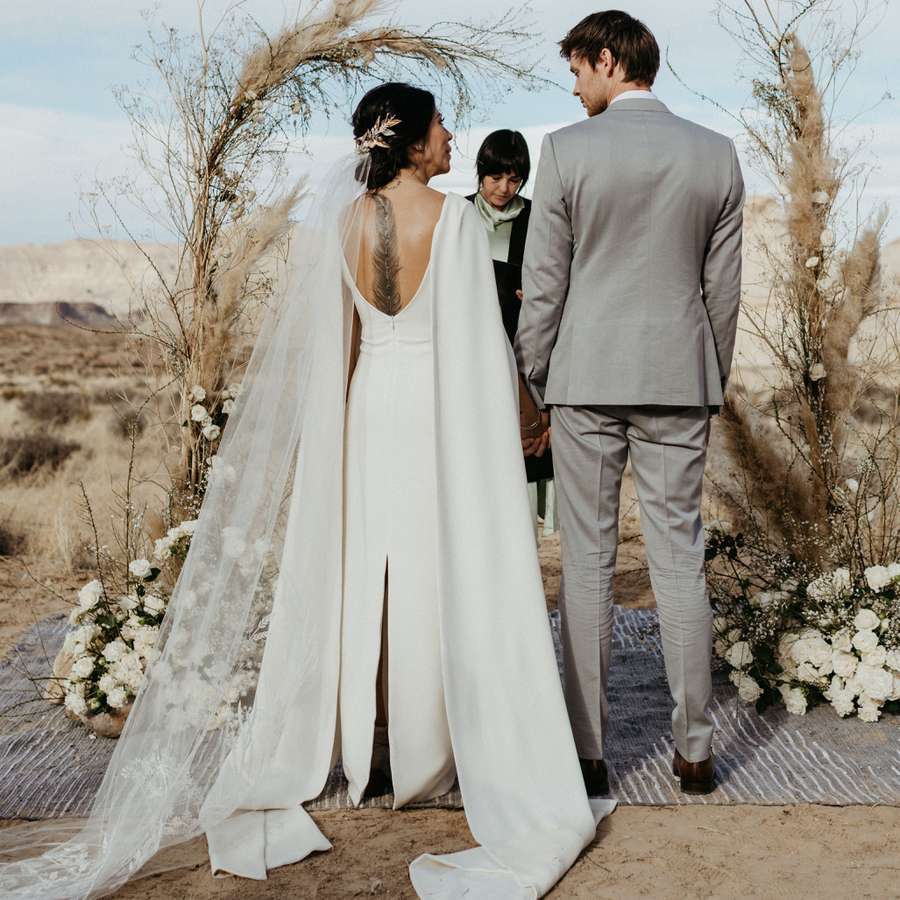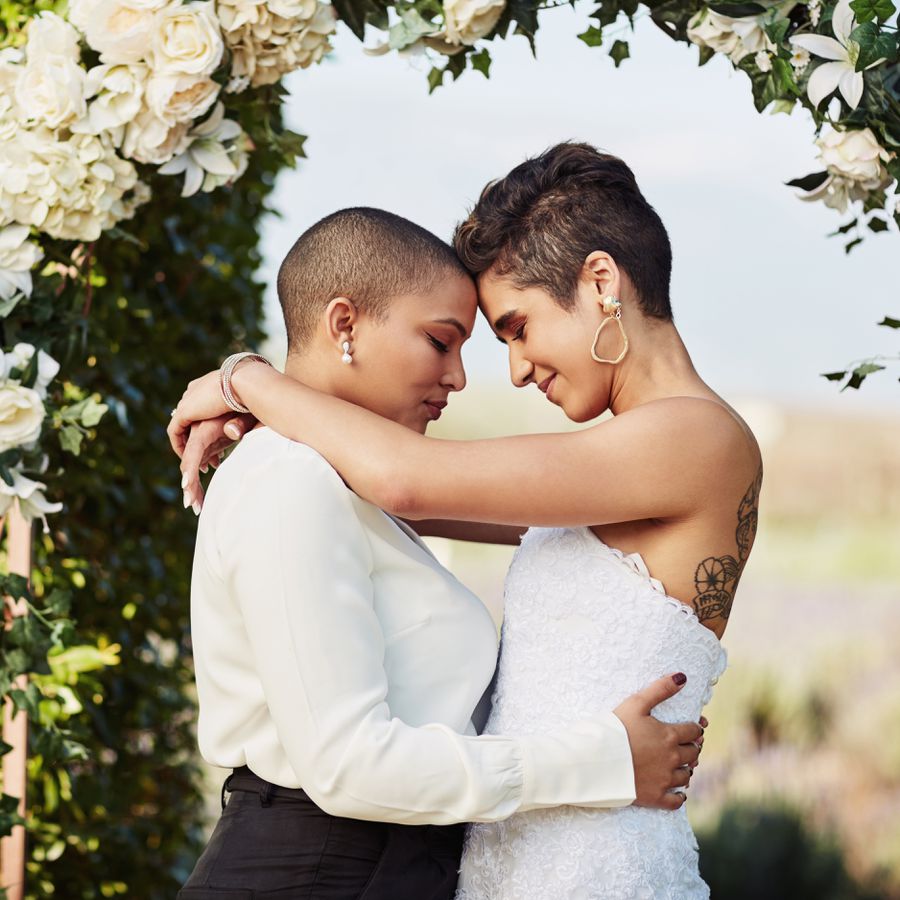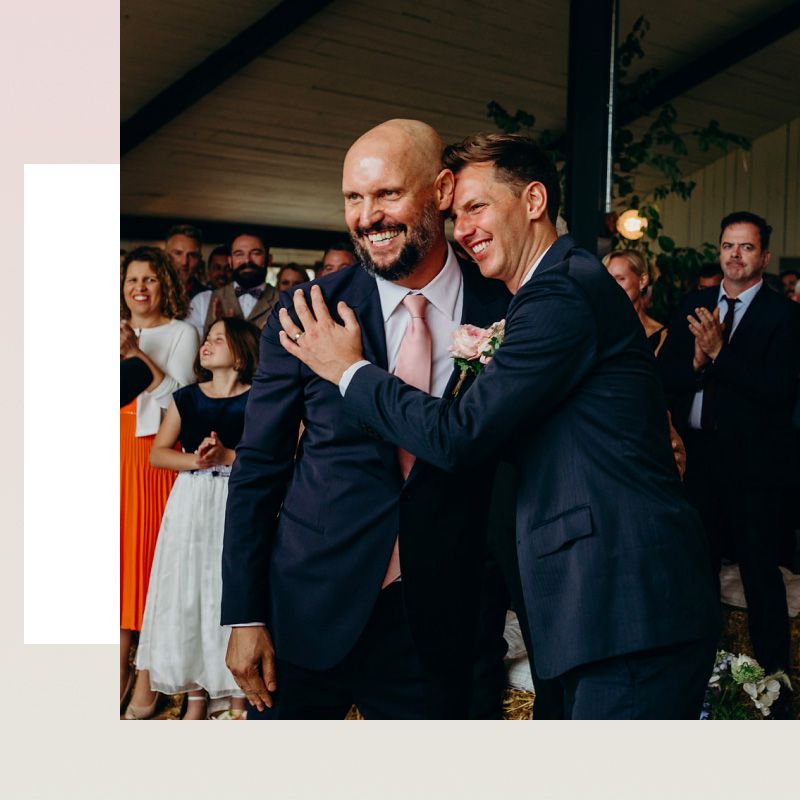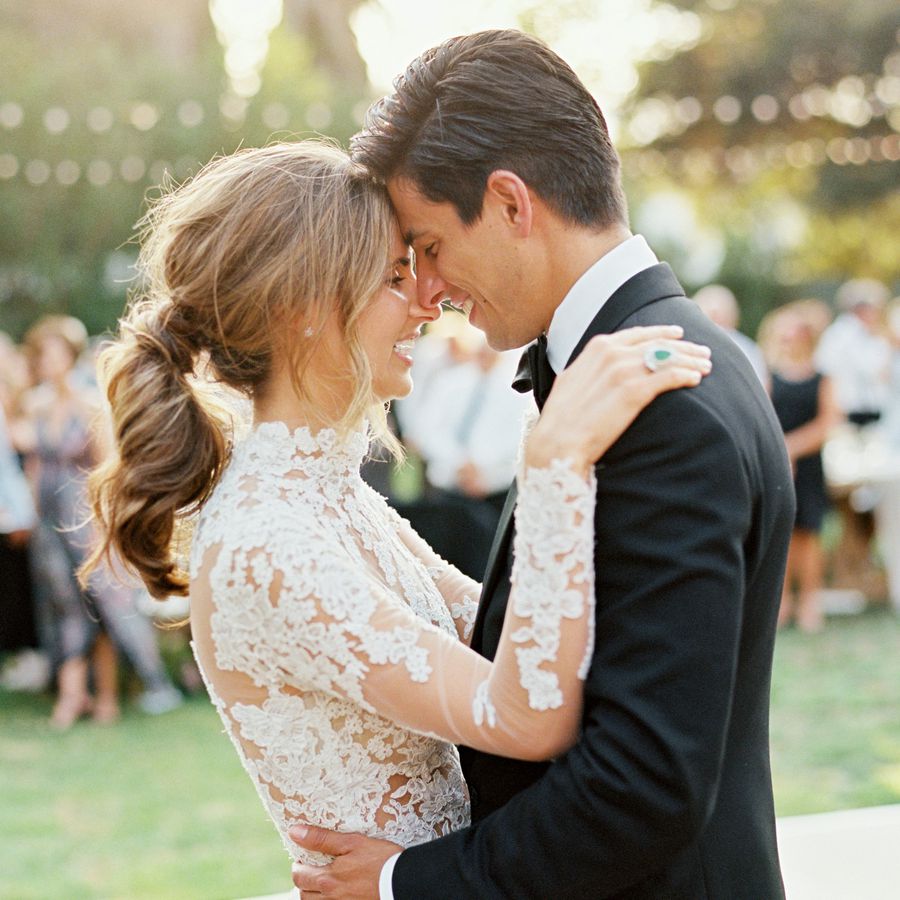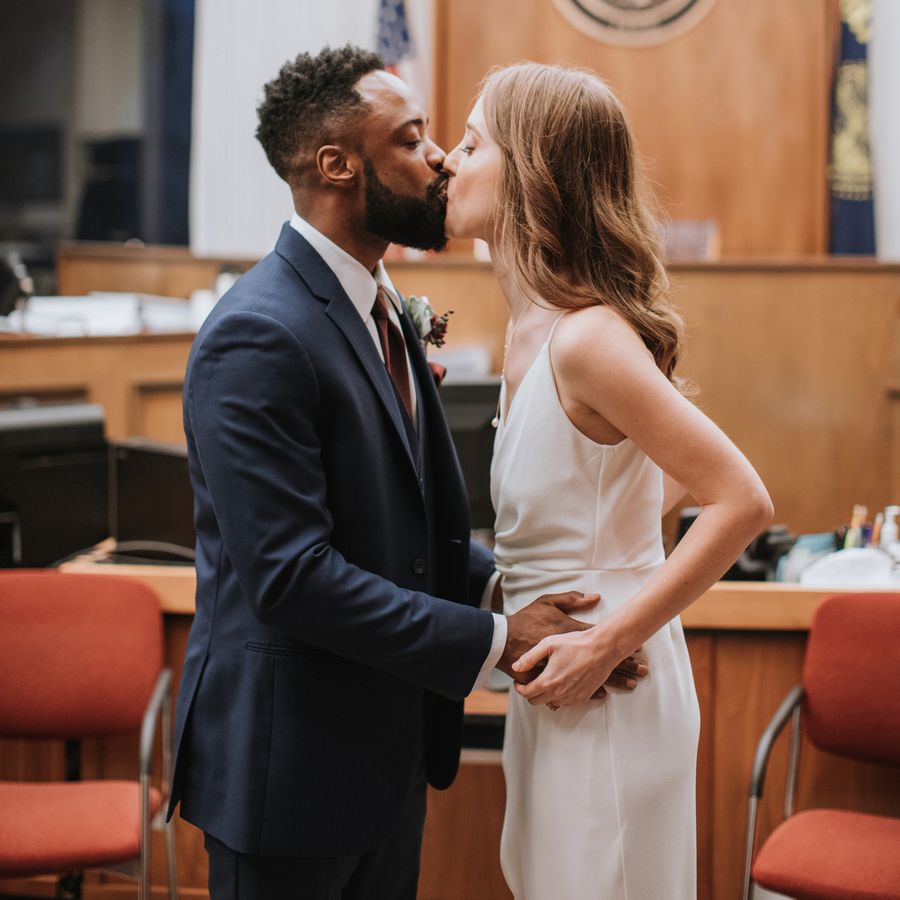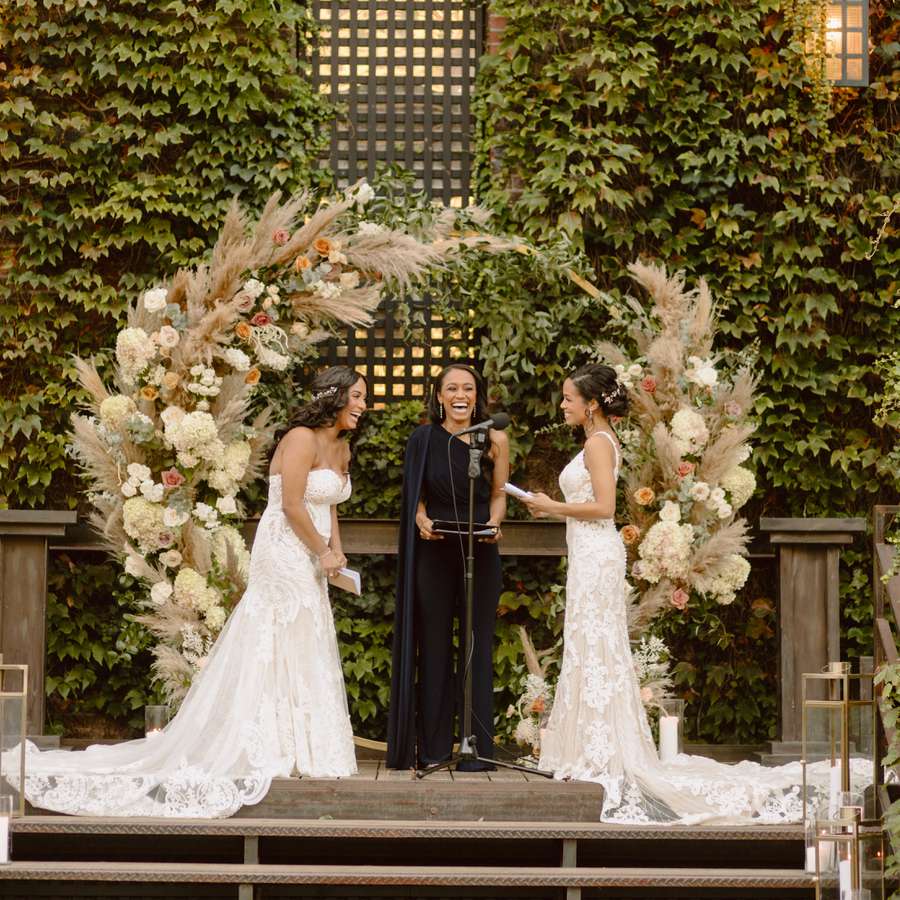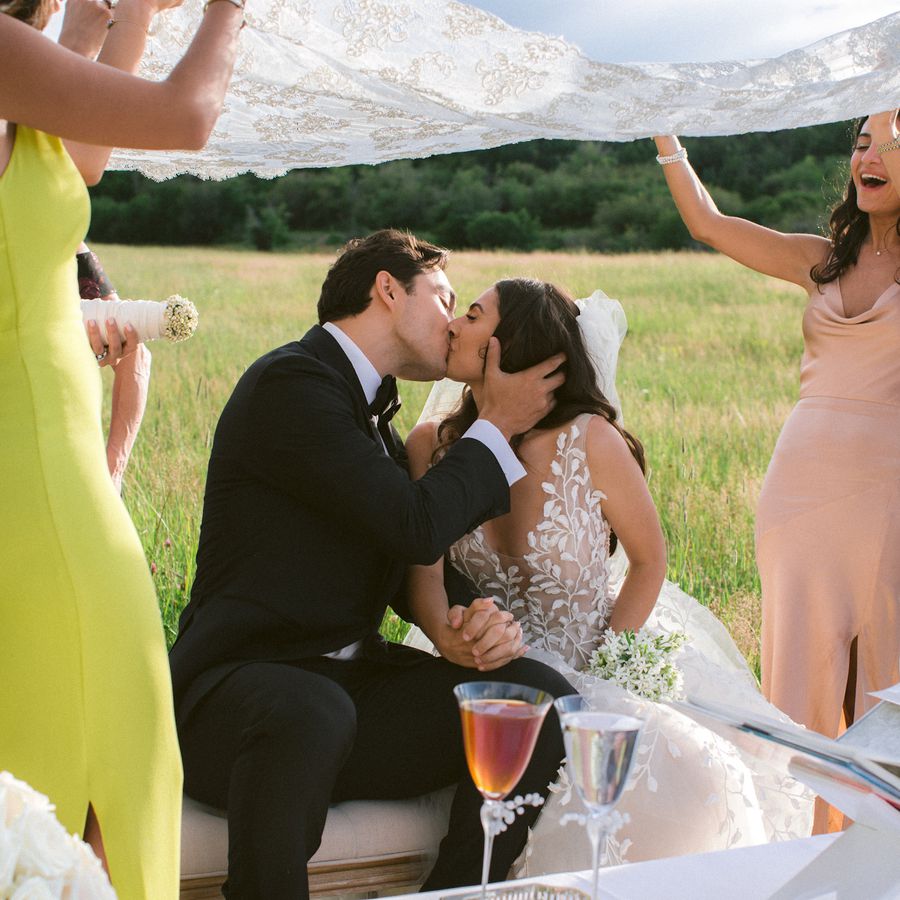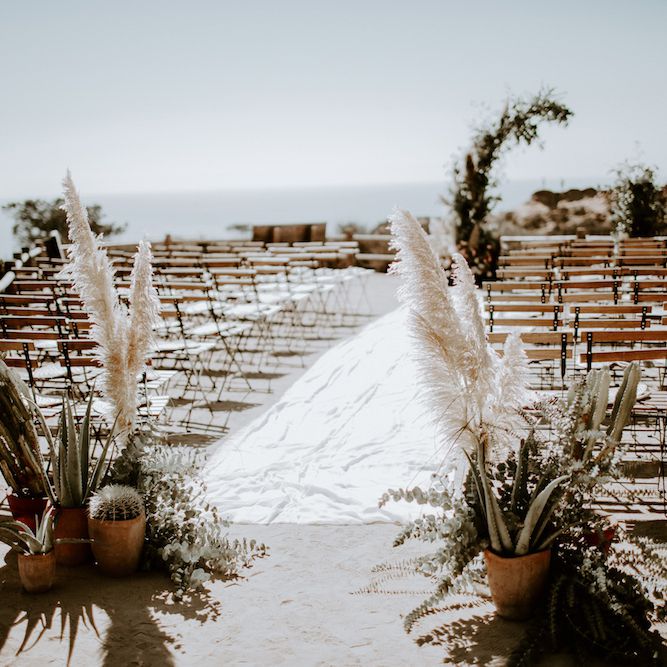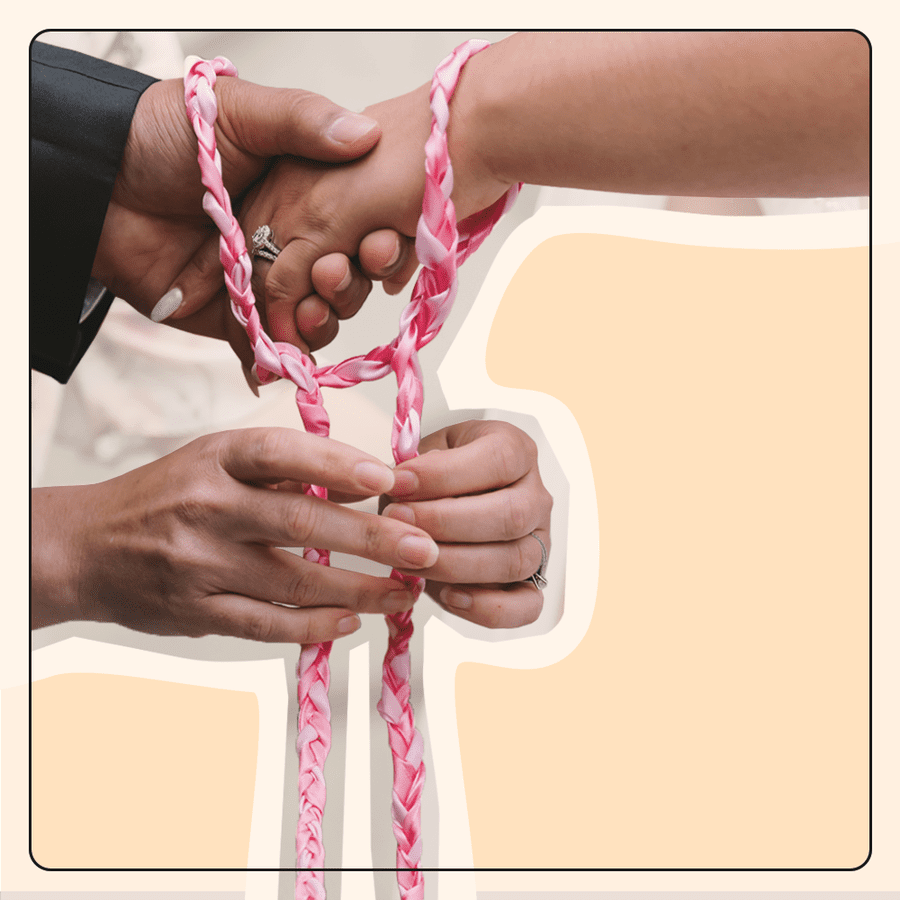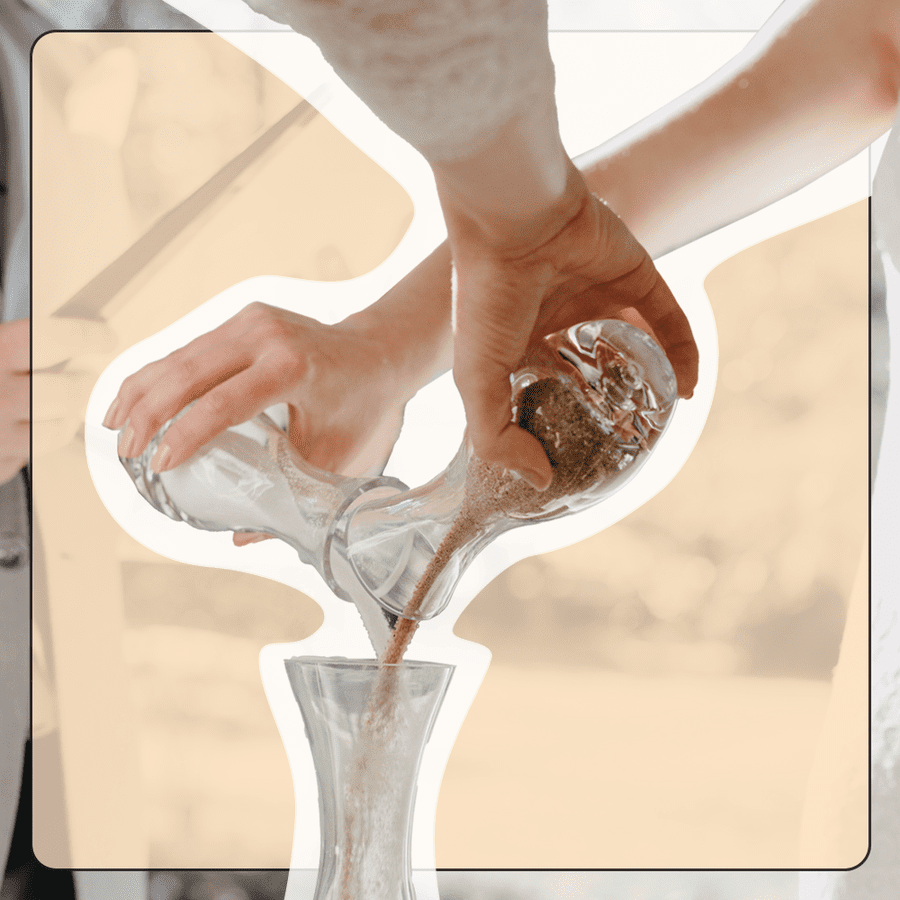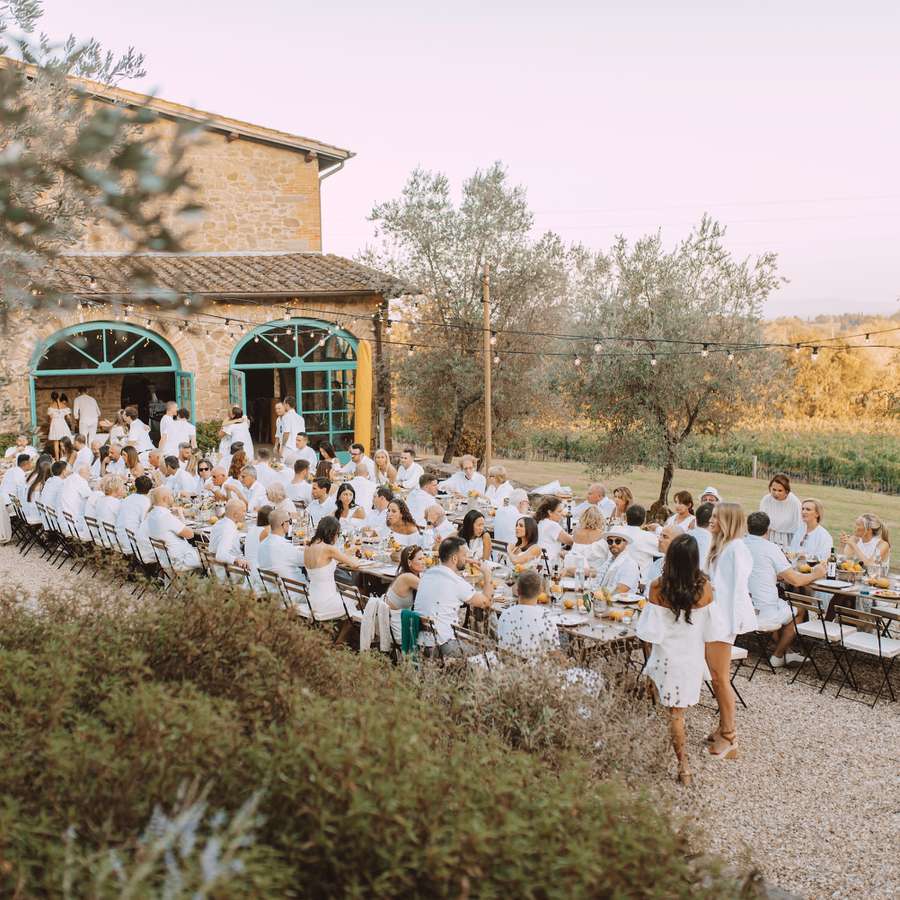:max_bytes(150000):strip_icc()/sq-1fa169537f6d4ecd83020ae8f4658ef6.jpg)
PHOTO BY DENNIS ROY CORONEL
Marriage is the intertwining of two lives in many ways, including religious beliefs. With different religions come different wedding customs, which can leave couples of different faiths wondering how to best combine the two into a single celebration. Good news: There’s more than one way to pull off an interfaith wedding, and they all result in a celebration that perfectly encapsulates what is special about your unique partnership in the first place.
What Is an Interfaith Wedding?
An interfaith wedding occurs when two people of different religious backgrounds blend their religious customs and traditions into one wedding.
“When you bring together your values and beliefs, you make a powerful statement about your solidarity, your bond to each other, and your commitment,” says Rabbi Judy Greenfeld. What’s more, the preparation process for an interfaith wedding sets the tone for everything that comes after, so it’s the perfect time to have conversations and establish expectations about how you’ll incorporate your respective faiths into the rest of your marriage.
Meet the Expert
Rabbi and Cantor Judy Greenfeld is the founder and spiritual leader of Nachshon Minyan, an alternative Jewish congregation and religious school serving Los Angeles and the San Fernando Valley.
Ready to start the journey of planning your interfaith wedding? Read on for tips on crafting the perfect ceremony.
How to Plan an Interfaith Wedding Ceremony
There's no one way to have an interfaith wedding ceremony. It requires some self-reflection and a lot of communication, but it's a great way to make your ceremony completely unique.
Give your engagement more time
In many circumstances, your officiant doesn’t just preside over your wedding ceremony—they’re also available to offer spiritual guidance and counseling as you prepare for life as a married couple. This can be especially helpful for interfaith weddings, which may involve strong cultures and traditions on both sides. Allow yourselves the space to have the necessary discussions, which your officiant can help guide you through. “How will you raise your children? Which holidays are important? Give yourselves time to negotiate and to think about what you’re going to create for your family and future,” advises Greenfeld.
If there are two officiants, make sure they connect ahead of time
If you’ll have more than one officiant performing your service, it’s ideal that they work together directly to build the ceremony. In Greenfeld’s experience, the best combined services are ones in which the officiants are able to alternate speaking. That takes prep work, but it’s worth it: A back-and-forth repartee will feel fully integrated, which is exactly how a marriage should be.
Ask your officiant to explain as you go
The joining together of two faiths in one marriage is a momentous occasion. Instead of being swept under the rug, it should be explicitly celebrated! The right officiant for your service will know to acknowledge the interfaith nature of your union at the top of the ceremony and will explain the symbolism behind and reasons for certain traditions, prayers, and blessings while they perform the rituals. Not only will that help everyone in attendance understand what’s going on, but it also allows the two families to better recognize and appreciate any overlap between the two faiths, which is key for further unification.
Mix and Match the Traditions Most Important to You
While planning your service, have your officiant break down all the traditional components of each faith’s wedding ceremony. From there, ask yourselves this: Which portions, if you removed them, would make the ceremony no longer feel like a wedding to you? Those are the keepers. Bring those components back to your officiant and ask them to use those as the foundations of your service. From there, they’ll be able to decide what’s best to omit to keep things moving in a timely manner.
Give a Nod to Your Faiths Directly in Your Vows
“Include statements about how you’ll respect, honor, and incorporate your partner’s religion in your own life,” says Greenfeld. If religion is important enough in your life that it’s guiding your wedding service, then it’s important enough for each spouse to acknowledge in the vows they declare to uphold in the marriage going forward.
Tips and Ideas for Interfaith Wedding Ceremonies
If you're looking for ideas for rituals and tips for including those closest to you in the ceremony, consider these four options.
Light a unity candle
This unity ceremony is Greenfeld’s favorite way to visually symbolize the coming together of two faiths, but there are plenty of other options. “It sets a wonderful tone because it brings humanity and spirituality.”
Fuse traditions into your decor
In addition to what’s said in your service, you’ll also want to find opportunities to visually bring together your faiths. In a Jewish-Hindu wedding, for example, a chuppah can be decorated with Indian textiles.
Include VIPs in all of your ceremonies
If your interfaith wedding will include multiple ceremonies over multiple days, invite your most important family members and friends to as many of the ceremonies as is appropriate. You’ll want the people that will spend the most time with your spouse to have respect for and an understanding of their faith, and seeing it be practiced in action is one of the best ways to ensure that.
Create a permanent reminder of your interfaith union
In Jewish wedding tradition, the ketubah, or marriage contract, is often displayed as a keepsake in a couple’s home. For interfaith couples, Greenfeld suggests not only including a paragraph about how the couple will continue to weave their religions together in their marriage but also grounding the ketubah in artwork that represents both members of the couple, so they’ll have a visual reminder of their unique union.
FAQs About Interfaith Weddings
If you're planning an interfaith ceremony, you likely have a few questions. Here are answers to some of the most commonly asked ones.
How do you choose an officiant?
If religion is important to you both, this is likely not the time to ask a friend to officiate—it takes a professional to navigate the tricky waters of honoring more than one faith in a single ceremony. Still, you’ll want an officiant who is open to performing a blended marriage, willing to offer spiritual counsel before and after the wedding, and, ideally, is familiar with the second faith they’ll be incorporating.
Another option: asking two officiants to conduct the ceremony in tandem. (This most often happens, Greenfeld notes, when one of the partners has a prior relationship with a religious leader that’s been significant in their life.) “I’ve officiated a couple of weddings where the couple has brought in a priest or a pastor,” she says. “It’s wonderful because I realize how similar the ceremonies are and where the crossover is. When we’re [emphasizing] what we have in common, it brings more love and more understanding into the marriage.”
How do you ensure your family is comfortable with your decision?
“The biggest challenge most interfaith couples face is how their families are going to feel,” says Greenfeld. “They don’t want to be left out. Their biggest fear is that they’re going to be outsiders in their own daughter or son’s wedding.” To that end, the first thing Greenfeld suggests is separate meetings with the couples’ parents to discuss any questions or hesitations and dispel any fears they might have about an interfaith wedding.
“I let them know more about what the ceremony will be and assure them it’s not a conversion or anything like that,” she explains. “It’s a huge foundational step for there to be some kind of good feeling and agreement.” Greenfeld will also use this opportunity to discuss different ways the parents’ faith might be incorporated into the ceremony. “Where you’d have a couple of Jewish prayers, maybe there’s a psalm I could insert that would make them feel more comfortable,” she muses.
How can you educate your guests about traditions?
There are several opportunities for this! Start with your wedding website. Include a page that explains the traditions you’ll be including in your wedding, and offer a bit of background knowledge on the origin of the tradition and what it represents. (The more info people have, the more involved they’ll feel, and the more excited they’ll be about participating.) This page is also a good opportunity to lay out any religious garment or dress code requirements your guests should need to plan for ahead of time.
On the wedding day, include the most crucial highlights in your ceremony program. This is especially important when it comes to any traditions guests will be participating in directly, not just watching.
Finally, ask your officiant to explain customs as they guide you through them. They’ll already have your guests' rapt attention, so this is the perfect time to continue their education.
